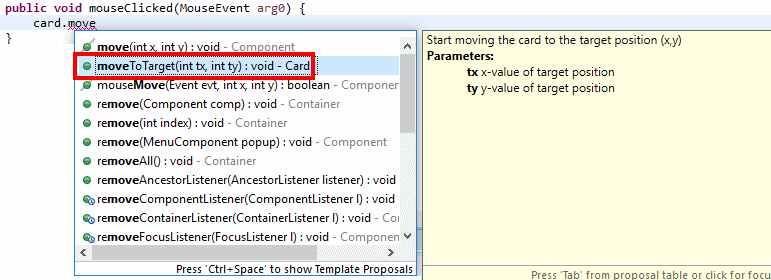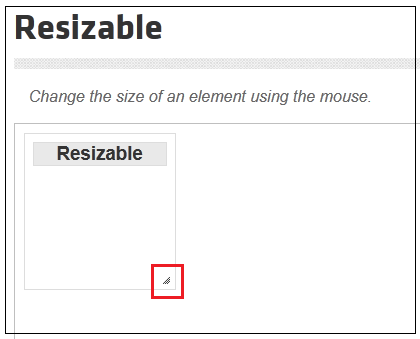

Handling special keyboard and mouse events are done using the AdvancedUserInteractions API.WebElement txtUsername = driver.findElement(By.id("email"))
#Java mouse coordinates offset series#
Just remember to close the series with the build() method. You can build a series of actions using the Action and Actions classes.

The output below clearly states that the background color became transparent after the mouse-over. ("Before hover: " + bgColor) īgColor = td_Home.getCssValue("background-color") String bgColor = td_Home.getCssValue("background-color") WebElement link_Home = driver.findElement(By.linkText("Home"))
#Java mouse coordinates offset code#
Step 4: Use the perform() method when executing the Action object we designed in Step 3.īelow is the whole WebDriver code to check the background color of the element before and after the mouse-over. The build() method is always the final method used so that all the listed actions will be compiled into a single step. In this case, we are going to use the moveToElement() method because we are simply going to mouse-over the “Home” link. Step 3: Instantiate an Action using the Actions object in step 2. Step 2: Instantiate a new Actions object. Step 1: Import the Actions and Action classes. It becomes the same color as the blue background of the whole orange table. After hovering, the cell’s color becomes transparent. If not hovered, its color is #FFC455 (orange). The cell shown above is a portion of a element.


In the following example, we shall use the moveToElement() method to mouse-over on one Mercury Tours’ table rows. OnElement – element that will receive the keystrokes, usually a text fieldĬharsequence – any string value representing the sequence of keystrokes to be sent Sends a series of keystrokes onto the element. Releases the depressed left mouse button at the current mouse location Moves the mouse to the middle of the element. A negative value means moving the mouse down. A negative value means moving the mouse left. Moves the mouse from its current position (or 0,0) by the given offset. Modifier_key – any of the modifier keys (Keys.ALT, Keys.SHIFT, or Keys.CONTROL) Does not release the modifier key – subsequent interactions may assume it’s kept pressed. Performs click-and-hold at the location of the source element, moves by a given offset, then releases the mouse. Target- element to move to and release the mouse at.ĭragAndDropBy(source, x-offset, y-offset) Source- element to emulate button down at. Performs click-and-hold at the location of the source element, moves to the location of the target element, then releases the mouse. Performs a double-click at the current mouse location. Performs a context-click at the current mouse location. MethodĬlicks (without releasing) at the current mouse location. The following are the most commonly used keyboard and mouse events provided by the Actions class. It contains the Actions and the Action classes that are needed when executing these events. Handling special keyboard and mouse events are done using the Advanced User Interactions API.


 0 kommentar(er)
0 kommentar(er)
